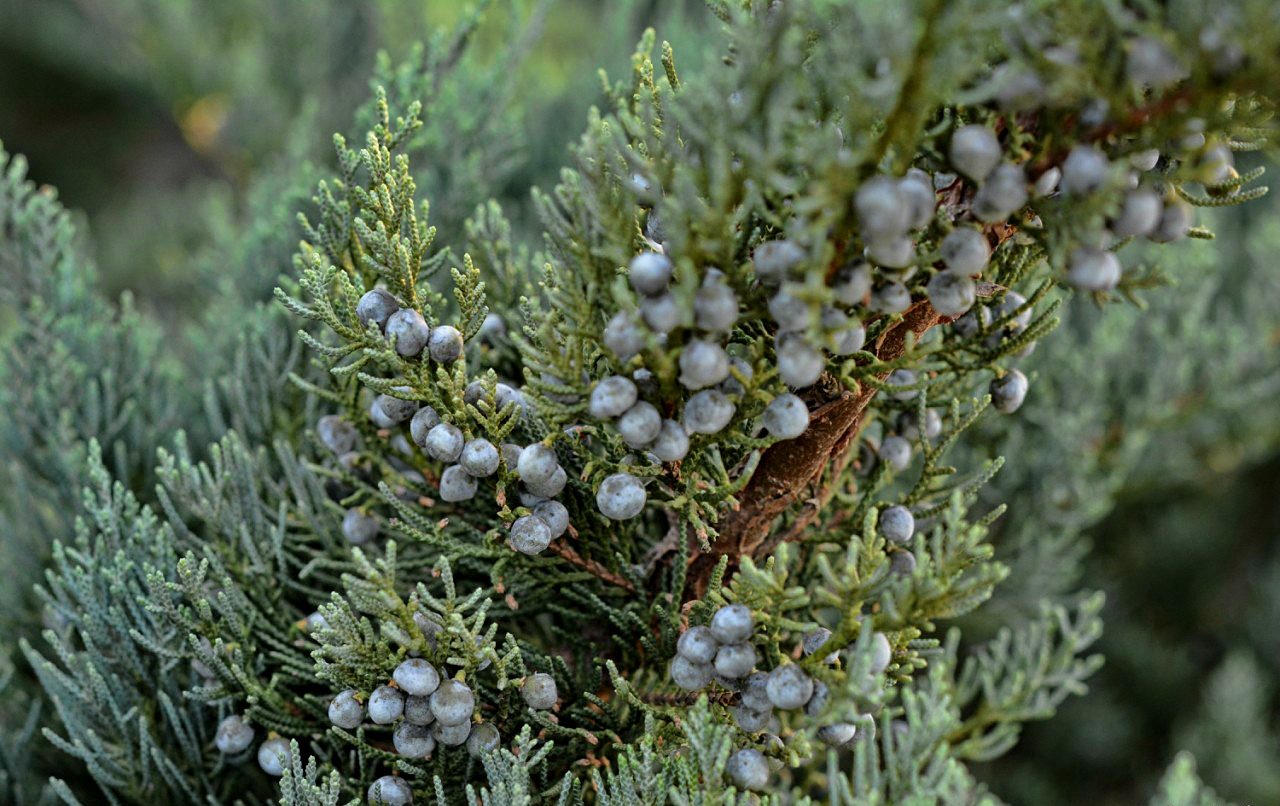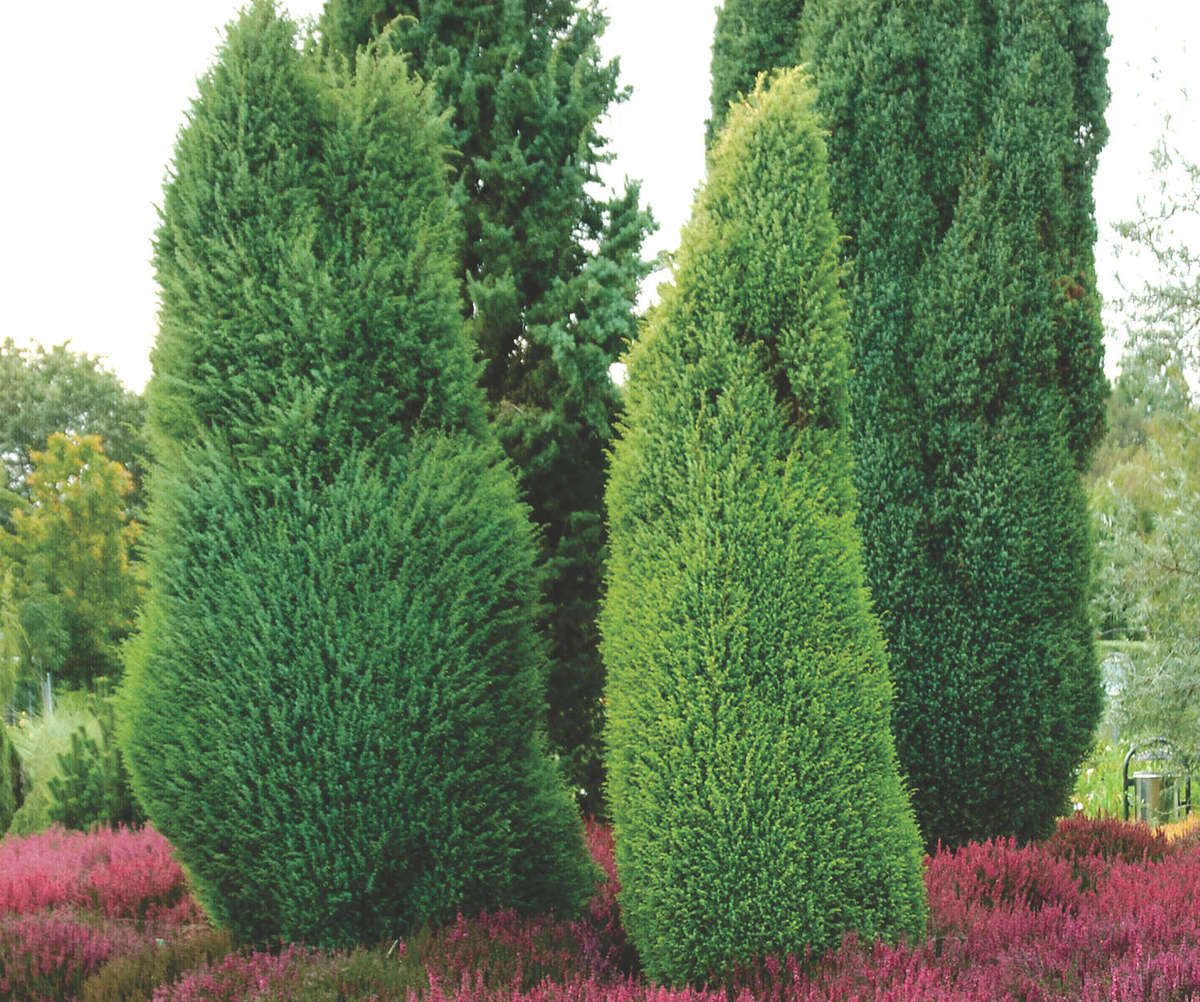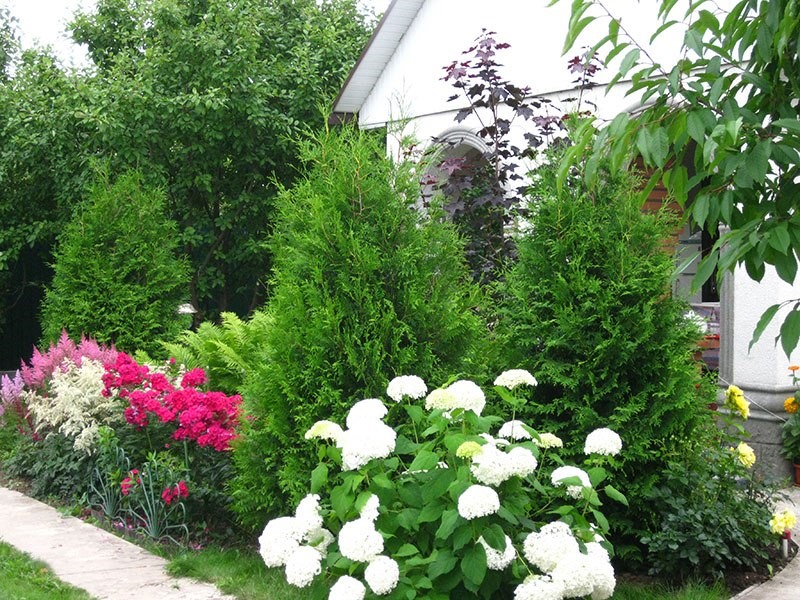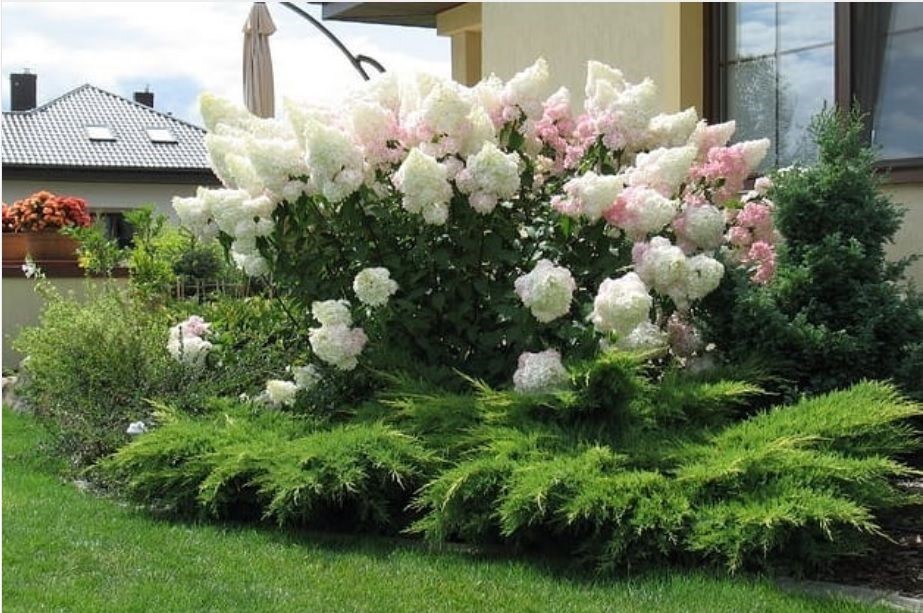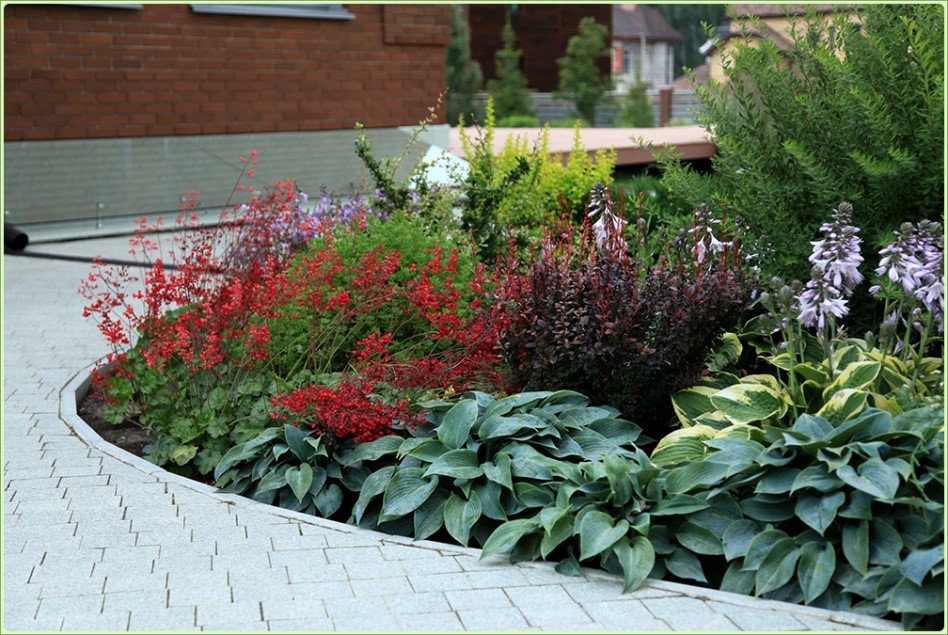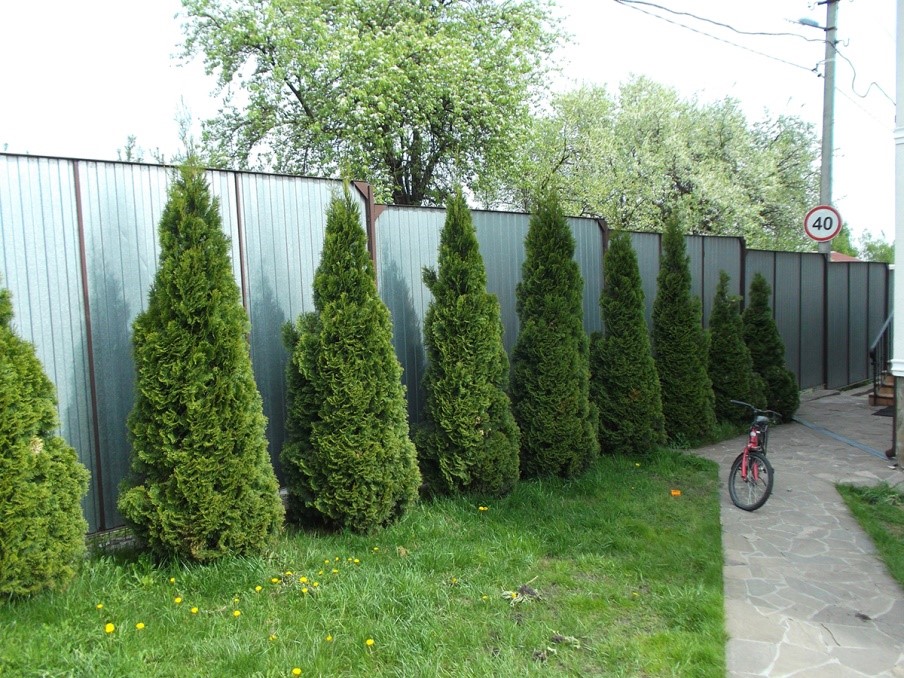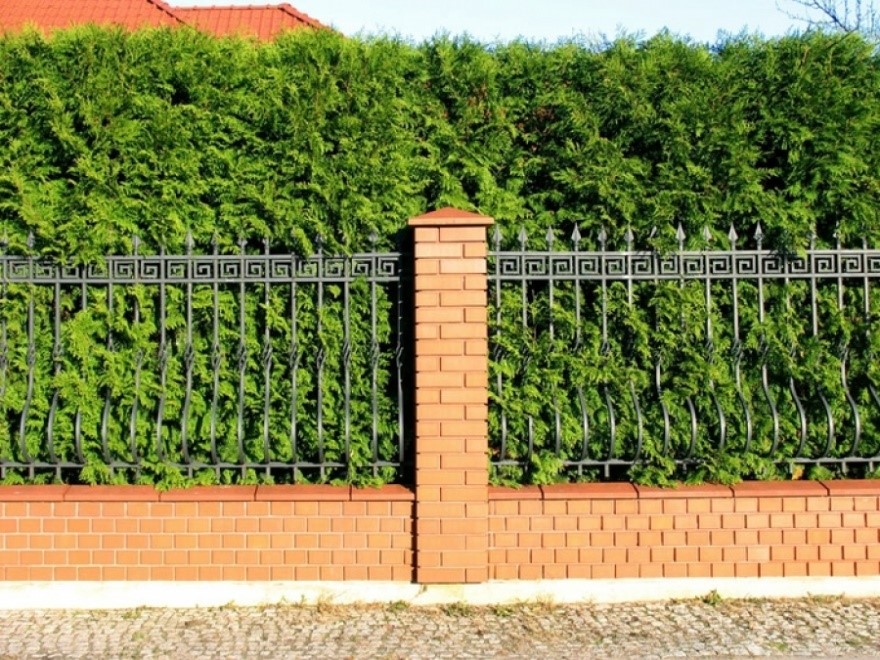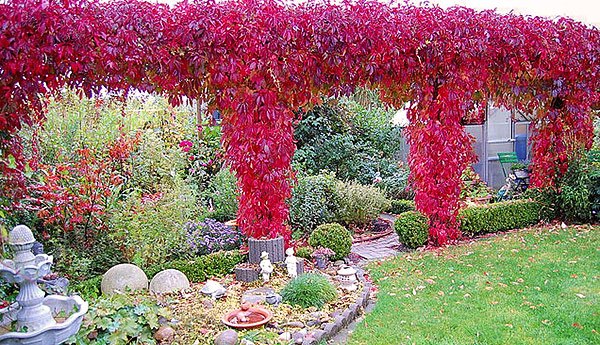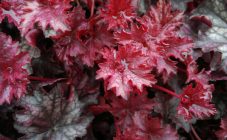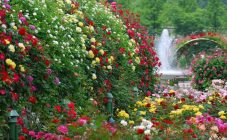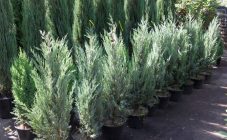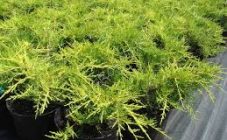Content:
Juniper in landscape design has gained immense popularity due to its unpretentiousness, as well as a wide variety of shapes and sizes. This article describes how you can use it to decorate your home lot, as well as park areas.
Why exactly juniper
In general, coniferous crops began to be used for landscaping the site for a long time, because they delight with their beauty at any time of the year. In the past few years, designers have also adapted juniper to decorate territories, since its unique appearance can significantly change the area being decorated. Its sizes, combining both dwarf species and specimens reaching the size of full-fledged trees, are able to combine a large number of decorating styles available to lovers of evergreen perennials.
What varieties can be used for planting outdoors
For decorating rocky areas, the Cossack juniper, which is dwarf, is perfect. This species is the most common and fastest growing, therefore it has gained great popularity among gardeners and professionals. Juniper Cossack Variegata in landscape design differs from other varieties in that it stretches along the ground, but at the same time its spreading crown has a stunning blue-green color and has a pungent coniferous smell.
Another good variety of creeping shrubs is horizontal juniper, the needles of which have a deep gray-green color with a slight bluish haze. The plant reaches 0.5 m in height and is perfect for decorating the edges of borders. Also, for these purposes, a cup-shaped Siberian juniper with gray prickly needles may be suitable.
Juniperus virginiana is also suitable, which, as a rule, is represented by tall columnar species.
An interesting option for planting can be the ordinary Hortsmann juniper, the crown of which, as it grows, looks as if drooping, forming a unique plant shape.
Another type of common juniper, which is distinguished by a chaotic pyramidal shape, is Suetsica. This species reaches up to 10 m in height.
Growing and planting methods
Juniper variegated is one of the most unpretentious and frost-resistant plant species. It can be planted in rocky, rocky, acidic as well as oily soil. Such a juniper is just for shady places.
To plant a shoot, you need to dig a hole several times larger than its roots, then pour drainage on the bottom in the form of old loose brick or small pebbles. If the soil type is acidic, then it is worth adding lime or dolomite flour. The land should be loosened, then place the shrub. Before this, it is desirable to treat parts of the plant with a solution of potassium permanganate. It would not be bad if the seedling has a closed root system. It must be placed in the planting pit along with an earthen clod from the pot. After that, the roots are covered with sand.Well, at the end, fill the remaining space with sawdust or tree bark, because this can protect against weeds.
For horizontal juniper, loamy or sandy loam soil types are best suited. Otherwise, all planting rules for junipers are the same.
This species should be planted in the spring in a place well lit by the sun.
Varieties of Chinese juniper are absolutely not shade-resistant and will certainly die if they are planted in the wrong place. The ideal time for disembarkation is April or May, as well as early September.
In general, all types of shrubs require the same care and planting algorithm, but with a slight difference that only specific types of soil are suitable for some varieties. And, despite the fact that most varieties of juniper can grow in the shade, you still need to ensure constant exposure to sunlight.
Water the plant with special care. If it grows in a place where groundwater comes close to the surface of the earth, watering should be carried out so as not to flood the plant with water. For one season, it is worth providing the juniper with about 5 waterings. In the hot season, their number should be increased. In addition, the branches should be regularly sprayed with water to maintain the beautiful appearance of the needles.
Juniper in garden design
A summer cottage can be easily decorated using both creeping and upright varieties.
Flowerbed with juniper
When decorating a flower bed, many are wondering what to plant next to a juniper? There are many options. Growing hydrangea and juniper will perfectly complement each other. But juniper and pear are a very dangerous neighborhood, since the fruit tree can easily wither away. The ephedra is a good breeding ground for the rust fungus that infects many crops. It is best to plant other plants with it, for example, tulips, roses, daffodils, other conifers, dogwood, honeysuckle, etc.
In addition, the juniper will look good on the alpine slides. For an English-style garden, you can choose pyramidal and columnar varieties. If you have the proper skill, the edges of the paths can be decorated with junipers on a trunk, or you can place such a beautiful shrub in the center of any compositions. A flower bed with hosts and junipers would also be a good option.
Hedge juniper
Compositions with juniper bushes are not limited to flower beds. With your own hands, you can create hedges, which will become an amazing variation of the fence. Such a creation looks good in combination with trees, for example, birch, and also beautifully encloses the territory of flower beds. Such a fence can be created against a red brick background.
For its formation, it is worth paying attention to the high-growing varieties of ordinary, virgin and Chinese junipers. But it is worth remembering that the last variety will have to be covered for the winter.
Ideas for decoration
There are many examples of how you can decorate your landscape using juniper.
The cone-shaped juniper blends wonderfully with a small hydrangea shrub.
By the way, lilac itself is perfectly combined with shade-tolerant juniper.
This combination is distinguished by its brevity and simplicity. Barberry berries will also help to shade the dark shades of the foliage.
Any fence can be arranged in various versions, both as a single wall and in the form of a thinned row of trees, the crowns of which grow upwards. Do not forget that in this way you can fence off the area from prying eyes.
Thus, it is not surprising that simple gardeners and designers are increasingly giving preference to this culture, because it really amazes with a large variety of unpretentious species, as well as possibilities for decoration.
